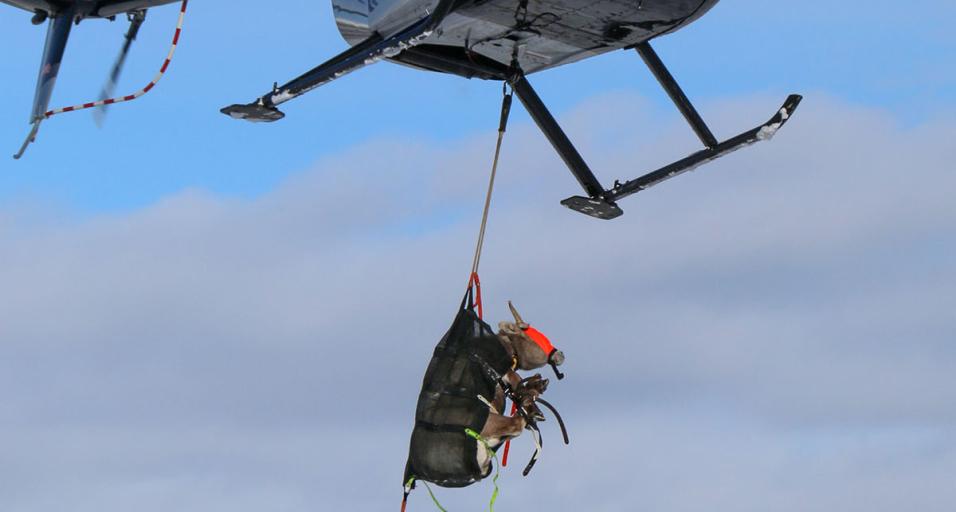The Wyoming Game and Fish Department and University of Wyoming are continuing their on-going research project on bighorn sheep in the Jackson Region. Recently, 12 collared female bighorn sheep were captured for disease sampling, body condition measurements, and fitted with radio collars to learn more about their survival, nutritional condition, migration patterns and the potential presence of disease. Samples were collected to test for respiratory pathogens that can cause pneumonia. Researchers from the Haub School of Environment and Natural Resources and Wyoming Cooperative Fish and Wildlife Research Unit at the University of Wyoming performed an ultrasound on each animal to measure body fat, which showed the animals in good shape going into winter. This is part of a multi-year study evaluating how body condition is related to pneumonia outbreaks.
The Jackson herd is primarily found in the Gros Ventre Mountains east of Jackson and has typically numbered approximately 500 animals, but has experienced two significant pneumonia die-offs in recent years. In 2002, it was estimated that as many as 50 percent of the herd was lost due to a pneumonia outbreak and another estimated 30 percent lost again in 2012. It is estimated that the herd has climbed back to around 400 animals currently. Other bighorn sheep herds across the Rocky Mountains have also experienced significant declines in populations due to pneumonia in recent years. Wildlife managers are hoping this research will help provide insight to prevent future die-offs.
Below are additional photograghs from the December 15 capture effort.
Bighorn Sheep Captured and Tested
Mark Gocke, Public Information Specialist, 307-249-5811

